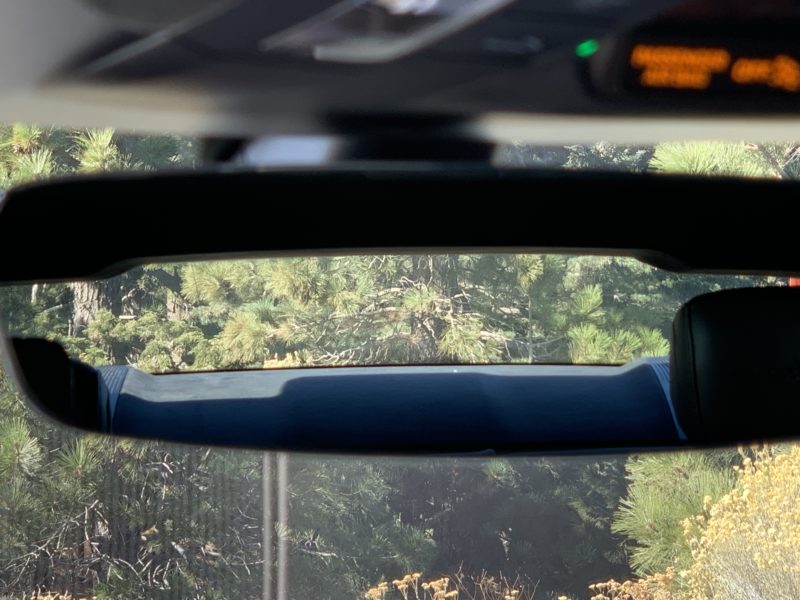
The Taycan is a seer, of sorts. As I sit down to the table with this car, it begs me to peer into its orbuculum for a glimpse of Porsches yet to come. The next decade of Porsche development is perhaps the most important the company has ever faced. Everyone in the automotive industry is pretty certain that battery electric is the future, but is there a way to make EVs which are not boring appliances? Can Porsche make an electric car not only fun, but feel like a Porsche?
In short, hell yes they can.
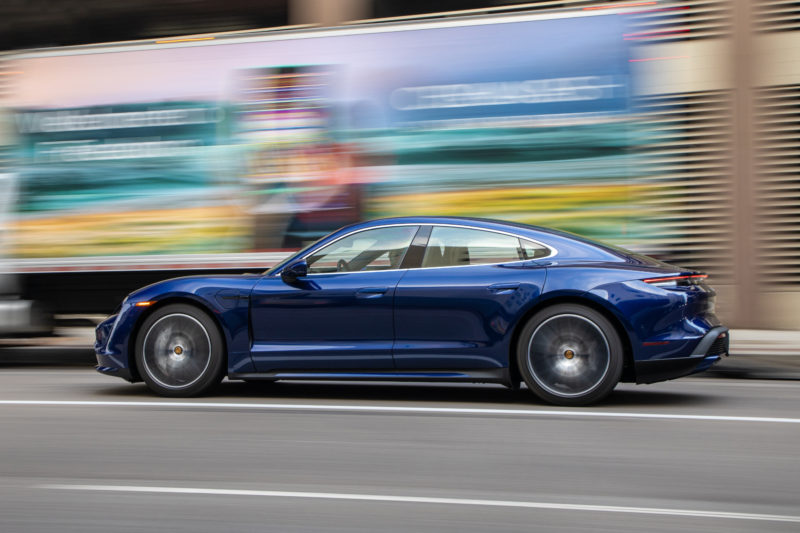
It’s been something of a slow burn watching Porsche experiment its way into the electrified automobile universe. Raise your hand if you remember the extremely fast hybrid GT3 R race car of a decade ago. That car kicked off an obsession with battery and electric motor technology that Porsche has been working on ever since. It’s best we all forget about that brief foray into diesel technology. It doesn’t do well to dwell on the past, eh? It followed that up with a series of hybrids, plug-in hybrids, and the all-conquering 919 Hybrid LMP1 racer. While the company has developed a handful of electric prototypes in relative obscurity, the Mission E concept from four years ago was the first indication that a proper BEV might be coming from Porsche. The rest is history. Now it’s time to peer into the future.
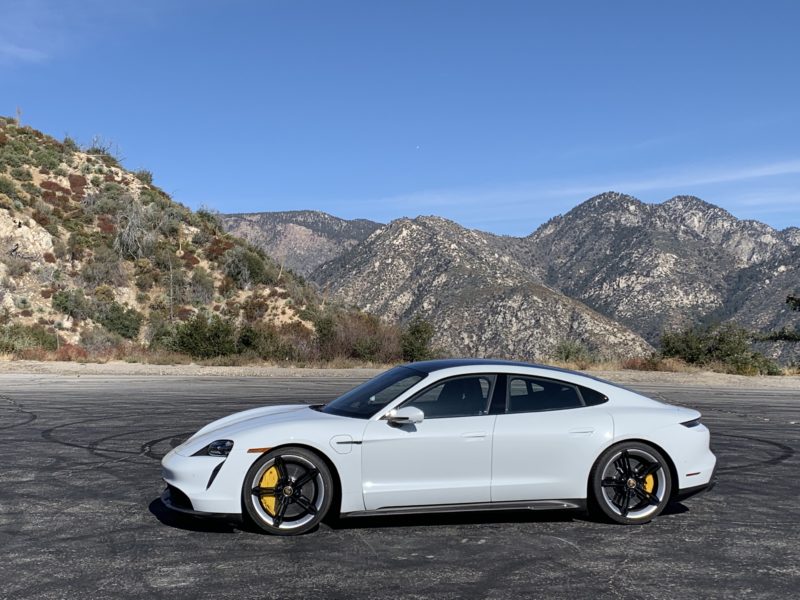
How It Looks
Lets begin with how the finished product looks. It’s not quite as low and lithe as the Mission E concept was all those years ago, but it’s a damn fine looking sedan with some definite Porsche cues that work quite well on the road. Porsche managed to carry over some of the styling of the concept, like the silver barrels of the wheels and the aggressive crease of the front headlight surround. The back of the car is slightly bland, as the corporate rear treatment is carried over from other Porsches and makes it less distinguishable from a comparatively run-of-the-mill Panamera. In profile, the sloping roof line is excellent with shades of 992 as it convenes at the rear lid with a pair of wide set hips. The 21″ wheels of the Turbo S we tested look a bit on the large side, but somehow fit within the wheel arches. The SportDesign package added a few splashes of carbon fiber to the exterior, which was a nice touch, but I’m not sure it was worth $5660.
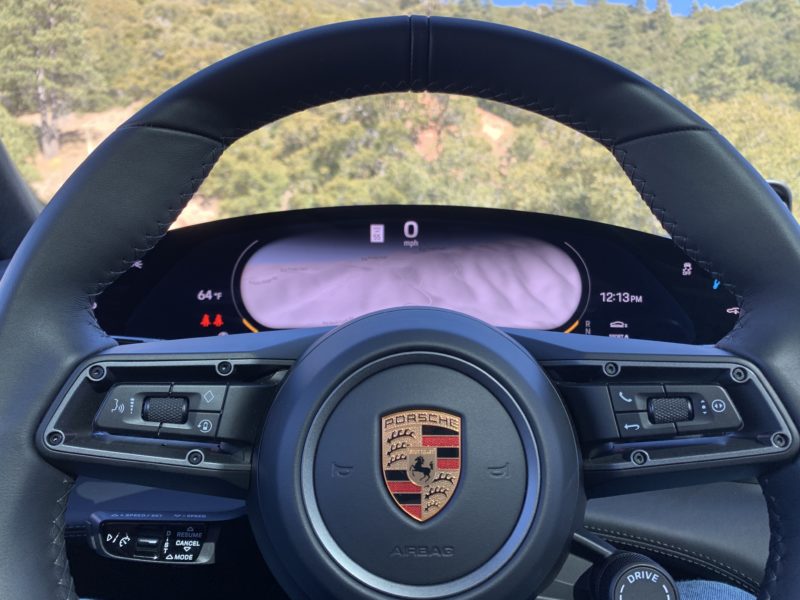
As I climbed aboard this electric rocket ship, Porsche’s familiar sport seats wrapped around me, and the steering wheel looks pulled straight from the company’s internal combustion sports cars. There are still the traditional floor-hinged pedals to rise up and meet your feet. The center PCM screen looks familiar to any current model Porsche owner, but the center console now houses a screen for HVAC controls, volume, and a pad to finger scrawl letters instead of typing. The traditional Porsche gauge cluster has been replaced by yet another screen with three configurable dials to help keep information right in front of you. My favorite piece of this new screen is the ability to make the whole thing your navigation map. It also has some 928-esque buttons on the outer edges of the panel which are haptic touch buttons, which is neat.

Wait, where is the shifter? Oh, its been moved from the center console up to the dashboard to the right of the steering wheel. A little toggle to shift from drive to neutral to reverse. And a little button marked “P” sits astride. I was a bit spooked when I moved my left hand up to the dash looking for the slot to insert the now-familiar key fob. *GASP* What’s this? A start button? The first Porsche in history to start without turning a key. I am beside myself!
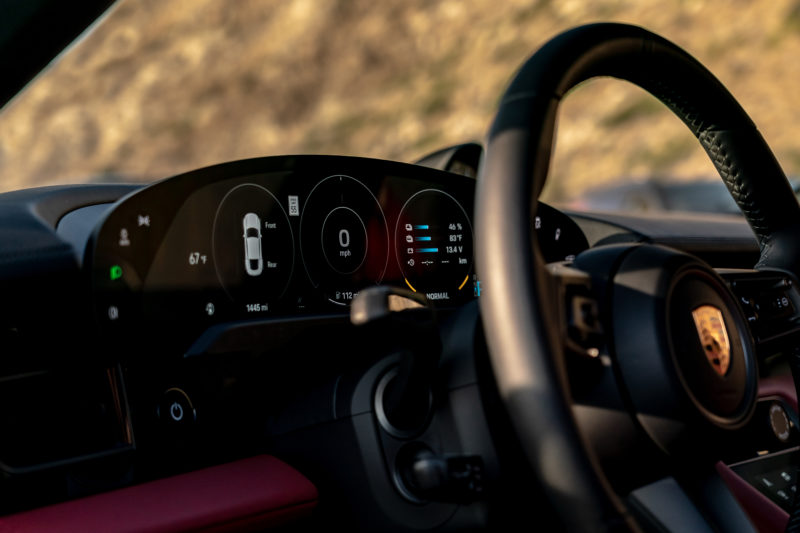
How it feels
There is an intrinsic feeling that this is a proper sports car from the second you climb in. It doesn’t fit the driver like a downsized Panamera but rather a longer wheelbase 911.
For one thing, the cockpit fits tight around you. I’m a tall guy, so I was forced to push the driver’s seat back behind the car’s B-pillar and push the power adjustable steering wheel out to meet my hands. Combined with the shallow driver door opening, I found it took a bit of contorting to get my legs under the steering wheel and slide my butt back into the seat. Perhaps this would be an easier maneuver with the standard seats, but the bolstered sport seats are well worth the hassle.

This is when the sedan shape begins to make sense for this sports car. Porsche wanted to come out in this electric vehicle market swinging. That means the car had to have adequate performance to keep sports car nerds like me happy, but it also had to offer enough electric range for the car to make sense as a daily commuter and occasional longer trip. So while it’s likely someone within Porsche initially wanted this EV to be a two-seater sports car, the longer wheelbase and four doors were given over to provide extra room for batteries in the floor.
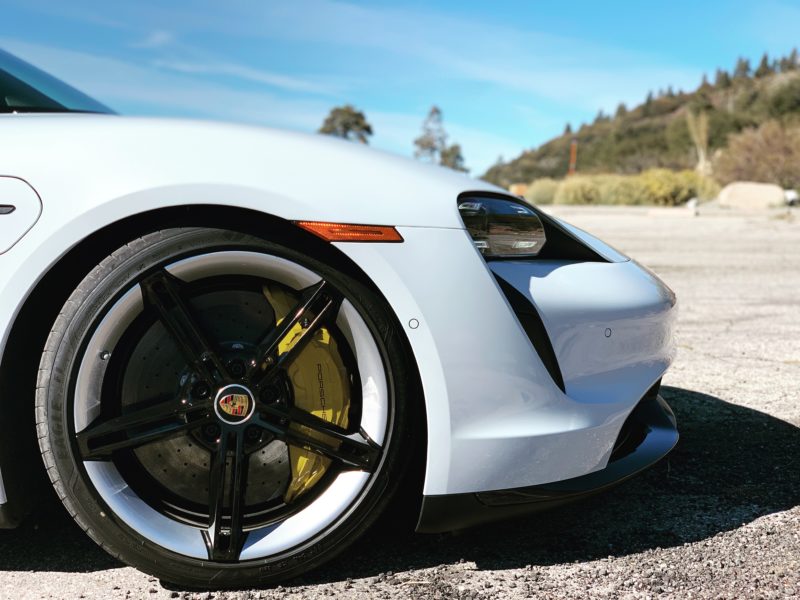
Speaking of those batteries in the floor, for a car that sits so low off the ground, the seats are elevated just a bit to make room for the juice. The seating position is the one thing that feels more sedan than sports car. That said, the rear seats are significantly more useful than those of any 911. There are no batteries where the rear seat passengers feet would go, allowing for what Porsche calls a “foot garage“. That means you’ve got plenty of leg room to sit upright under the sloping roof line. I attempted to sit in the back of the Taycan behind the driver’s seat adjusted to my 6’2” frame, and while I wouldn’t be able to ride across the country like that, a 20 mile trip across town wouldn’t be impossible.
How it drives
The statistics of this car paint an odd picture. Sure, it’s got a sub-3 second stopped to sixty time. But it’s also about 5200 pounds, and we all know weight is the enemy of sporty behavior on the road or the track. How can Porsche circle the square of all that weight in a sedan they’ve dubbed a sports car?
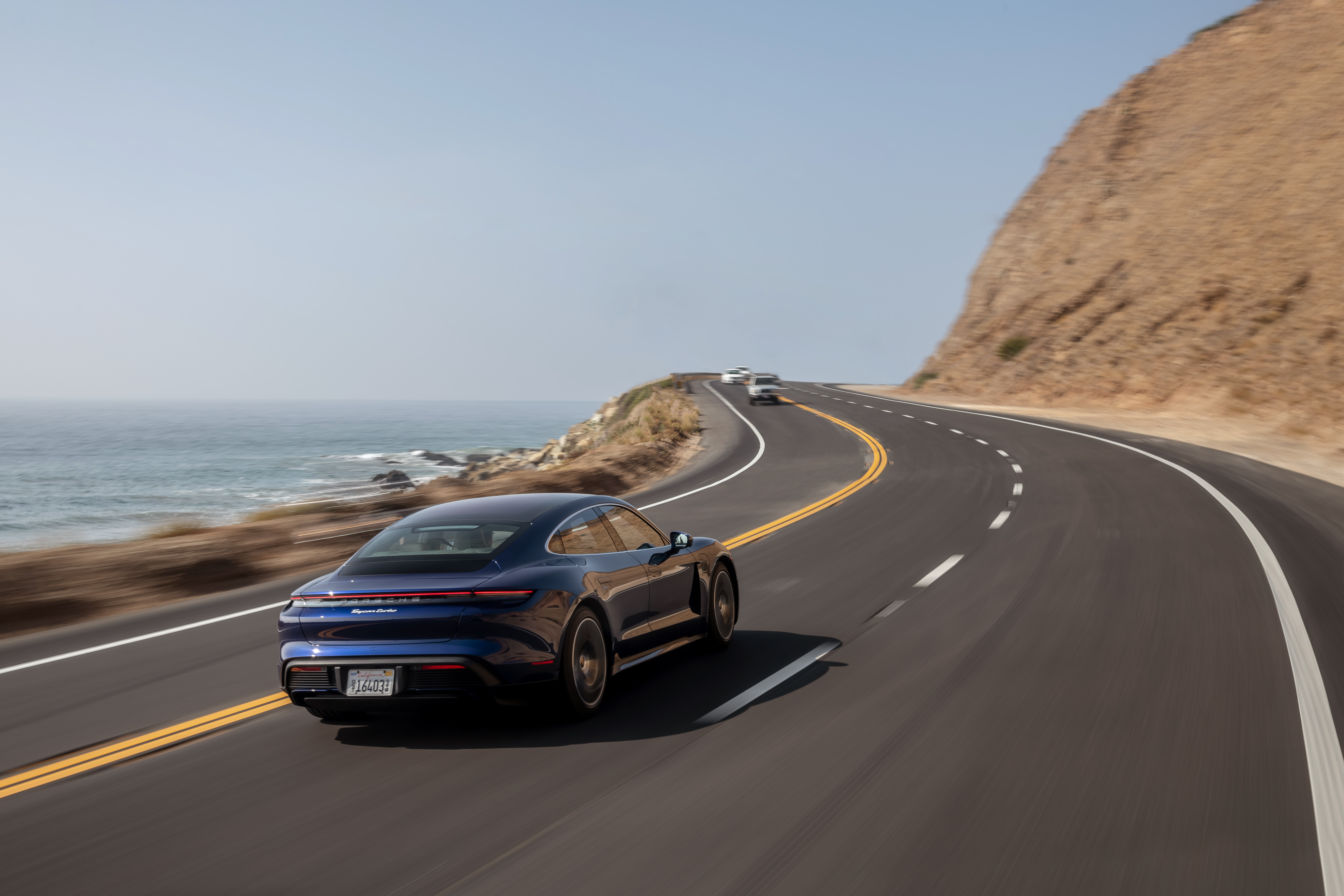
There is certainly some technological wonder in Porsches active chassis control systems, but the pure win of the Taycan is that its weight—largely the batteries—is kept low to the ground and inside the car’s wheelbase. That means it has an incredibly low center of gravity and a balance that is difficult to upset. Both of these things can contribute to a very well behaved on-road dynamic. I was told by the Porsche team that the Taycan’s suspension and dynamics tuning were the task of the same team who worked on the 718.
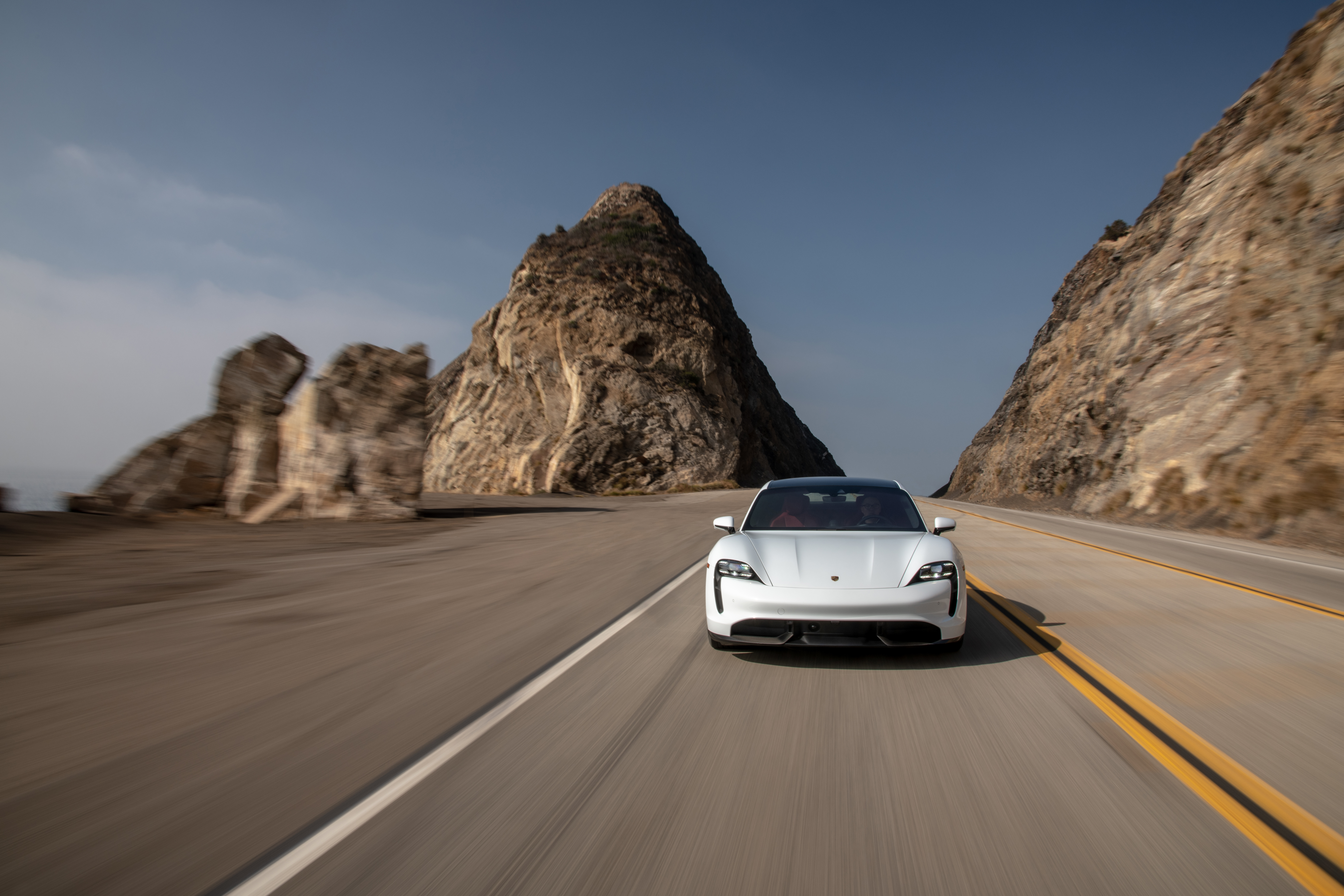
The weight is certainly still noticeable, particularly under braking. 5200 pounds is a lot of pounds to deal with, regardless of the massive tires, incredible acceleration, and gigantic carbon ceramic brakes. It doesn’t roll around and pitch about, but you can feel the hulking heft dancing around underneath you. It’s an NFL linebacker trained in classical ballet. It makes all the right moves and hides its weight well, but it’s definitely there, partially obscured by a veneer of electronic aids.
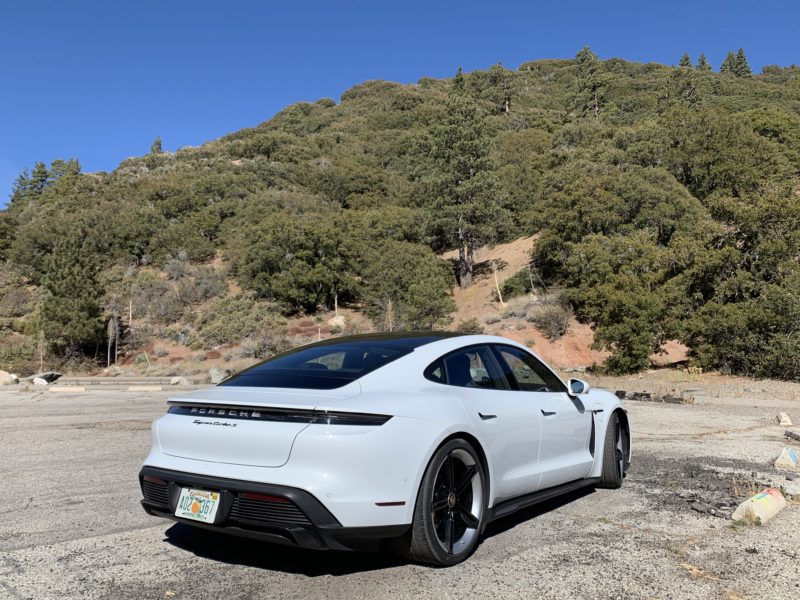
To say that it drives pretty much like a 5000-pound Cayman with 700 horsepower is pretty much spot on. It has prodigious grip through even the tightest of corners and allows you to carry speed like only a proper Porsche can.
Our drive route on the test began with a jaunt across Los Angeles in moderate morning traffic, which was aided by the car’s exquisite adaptive radar cruise control system. Unlike some systems, it has proper stop-and-go capabilities, working all the way down to a complete stop, and allowing the car to take off from a stop again when the car in front has moved. It is not a “self-driving” system like some claim to have, and you definitely still have to keep your eyes on the road and hands on the wheel, but it’s a slick system. Porsche, as of right now, doesn’t believe in autonomous driving. Porsches are for people who enjoy driving, so drive!
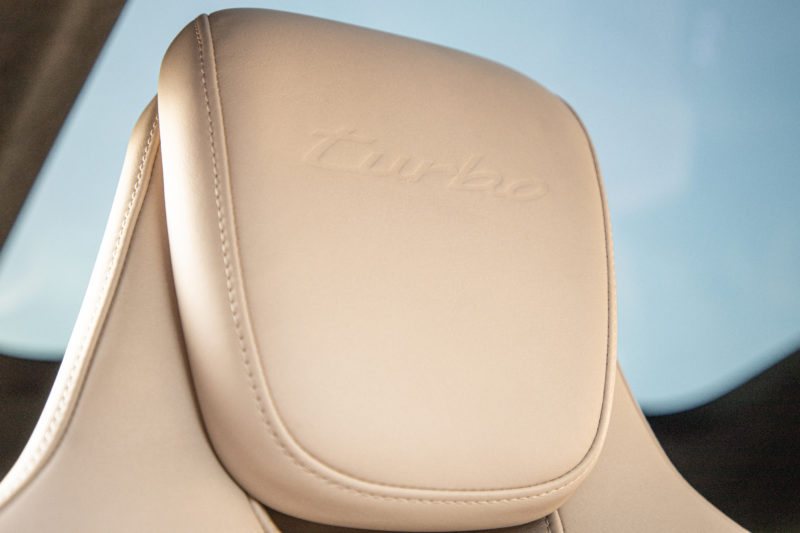
After lunch we headed all the way down the twisting and winding spine of mountain roads known as Angeles Crest Highway. It is easy to see why this road is known as one of the best driving roads in the country, because it’s a desolate and rarely trafficked road composed of quality pavement. You have to keep an eye out for the occasional rock in the middle of the road, or the odd brave squirrel, but it’s a few hours of excellent driving in even the fastest of sports machines.
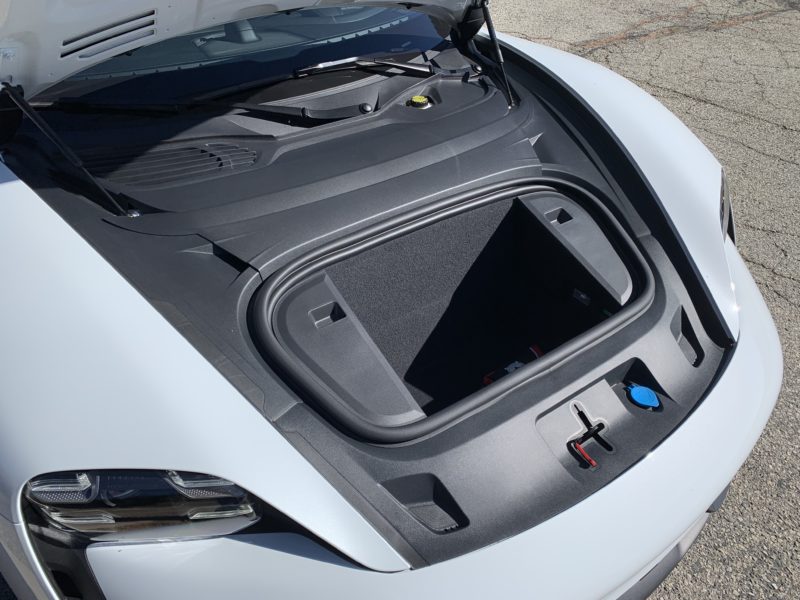
This is a great locale to test a car’s road holding and steering. Porsche has always been at the forefront of steering feel, and even when the company switched over to electrically-assisted steering it didn’t take long for that tech to catch up to the manual racks of yesteryear. You might expect a 5000 pound sedan to have steering feel injected with a fistful of Novocaine, but that is about as far from the case as you can get. This rack possesses every millimeter the feel that a 991 or 981 does. Which is doubly surprising, considering the Taycan has four driven wheels.
I have not driven the new 992-generation car, but I suspect its steering might bear a bit more than a familial resemblance. There is an effort to the steering that isn’t unwelcome, and communicative would be an understatement.
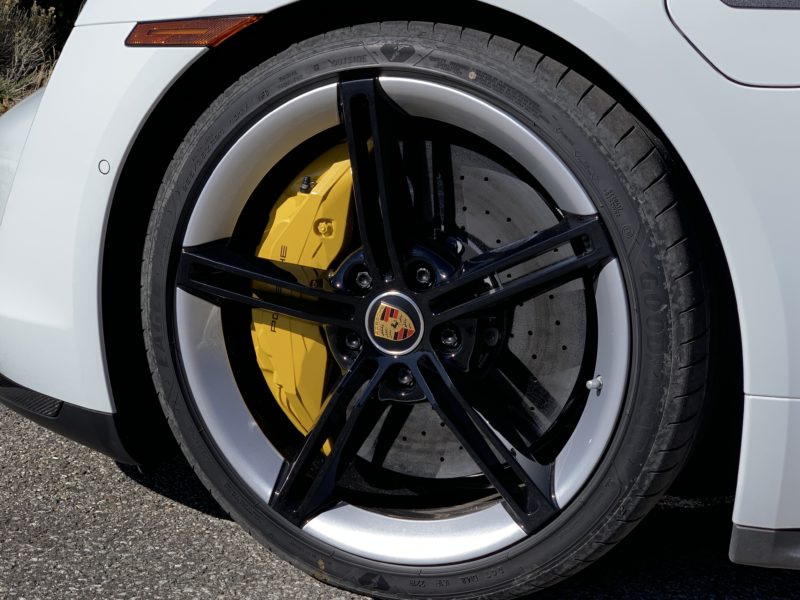
Because our tester was equipped with a set of sticky Goodyear track-ready rubber on a massive set of wheels, I was hardly surprised that the car gripped like it was Velcro’d to the pavement. The AWD and mid-engine-like balance meant you could point the steering wheel where you wanted to go and jam on the accelerator (don’t call it the gas) and shoot off in that direction. You can adjust steering and throttle to your whim mid-corner and the car will just continue on the trajectory you’ve set for it. The one or two times that I carried too much speed into the corner, a quick stab of the brakes brought it in line and we kept rolling.
I’ve got a pair of 60-ish pound basset hounds who spend most of their day lazing around the house, but every once in a while a big-eared desert hare will find its way into our back yard and the pair will go shooting off after the thing with a speed, verve, and energy you’d never expect. In a way the Taycan is a bit like that. When you see the weight figures of the car, you think that it can’t possibly be as quick as they say. But then it is. Holy Moses is it ever quick!
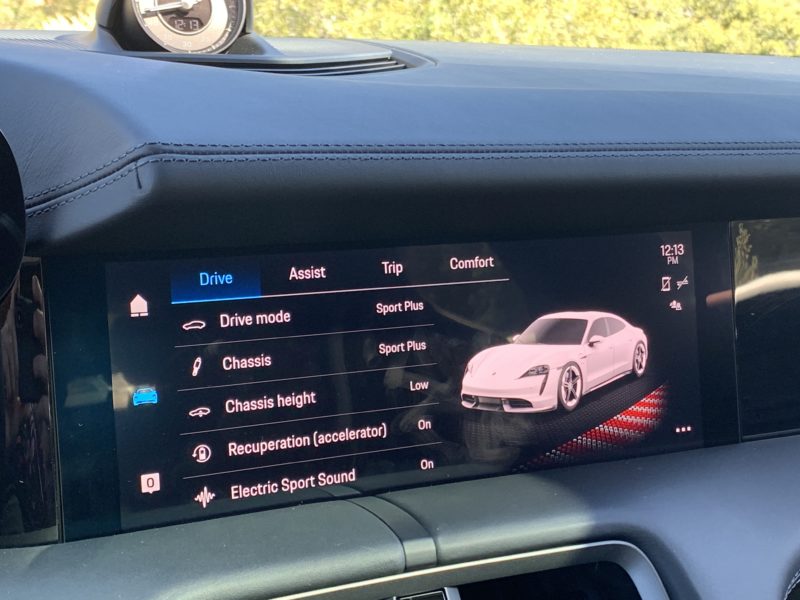
If you pop the car over into Sport+ mode and hold your left foot on the brake while shoving the accelerator to the floor it’ll activate launch control. You’d better have a long stretch of road ahead of you to manage this feat, because it’s going to go and it’s going to go NOW. There is no reason that any mortal human needs this level of neck-snapping acceleration, but Porsche will let you have it if you can put down the cash. And if you hold your finger over the haptic control button for traction control, it’ll turn completely off and the electric torque will give you the ability to instantly create a smoke screen around your Taycan. Now, of course, I’m a responsible driver and I definitely would not have tested either of these features on a public road in the middle of the day, nor would I suggest you commit these illegal acts. You’ll just have to use your imagination.

How it charges
The public charging infrastructure for this car isn’t quite there yet. I left the start of our drive with a 220 mile available range, and after driving 170 miles of anything-but-easy miles, the dashboard told me I still had about 50 miles left to the charge, and I could easily have made it back to the end point without needing a top up. Porsche, however, wanted me to experience the car’s ability to charge at the Electrify America 800v station. This particular station was located at the Walmart in Burbank, and is capable of charging at up to 350kW, though the Taycan is only capable of sucking down 270kW at a max.
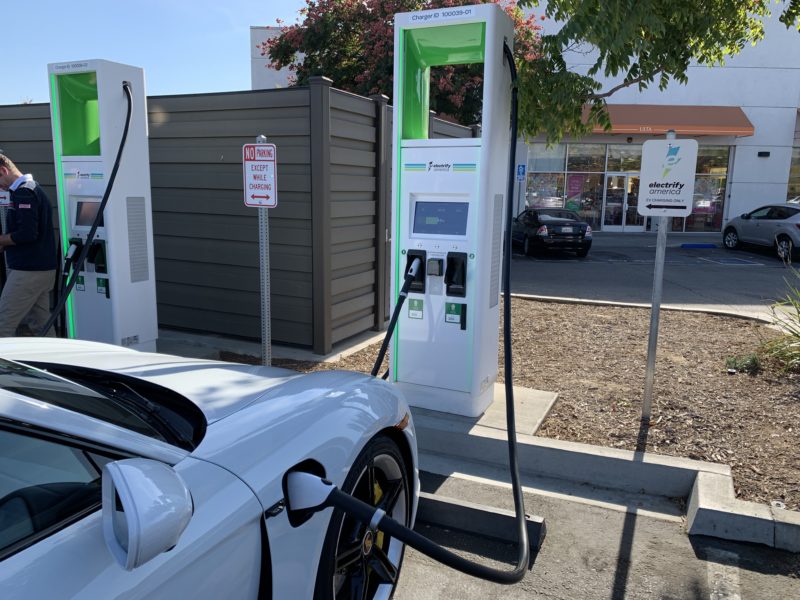
Plugging in was pretty easy. There is a DC fast charge port on the right side of the Taycan, hidden behind a small door which you can slide your finger under to get it to open electrically. Then, you flip down the cover for the fast charge plug in, and shove the big unweildy plug into the car. It feels a little like pumping gas in that the plug’s cable is easily as thick as the hose on a fuel pump. Then you swipe a card or use the app on your smart phone to start up the charge and it spins up a magic electron pump to get your battery charged up again. I took on about 60kWh of energy, which cost us $21.81. I can’t remember the last time I had a gas fill up that only cost twenty bucks. My last fill up in the 912E was over a hundred!
In about 20 minutes my Taycan Turbo S went from about 13% charge to 80%. It was convenient that there was a Walmart there, as I was able to pop inside for a soda and by the time I came back it was almost done. It’s not quite as convenient as filling up a gas car, but the real crux of this car is that you can own it and never ever need to go to a charging station. Chances are pretty high that if you can afford a $200,000 electric Porsche, you probably own a house or at least have a place with a garage. If you charge up at home every night, you can go on a 200 mile trip every day and still not need to go to a charging station to top up. If you don’t drive like a hooligan, you might be able to get even more miles out of it than I did!
But really, where’s the fun in that?
What’s the verdict?
Realistically, nobody needs the massive 750 horsepower that this Taycan Turbo S delivers. If I were in the market for an electric Porsche, I’d probably settle for the upcoming Taycan 4S, or (hopefully) Porsche will release a rear-wheel drive version with an even longer range and a lower price tag. That’s the one I’d really want. But, if you’re looking for the biggest and best that Porsche offers, this is a damn fine toy that plays to all of the strengths of a Porsche, plus the ability to help reduce your carbon footprint.
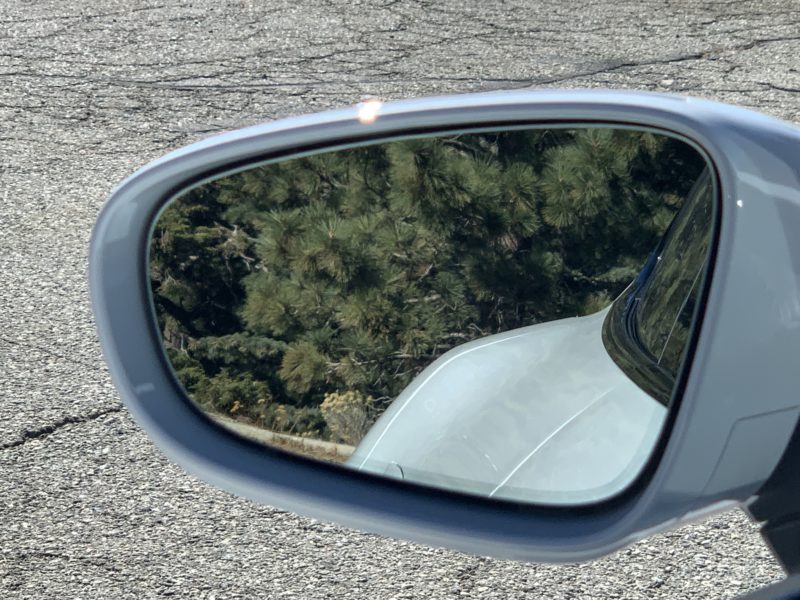
It’s obvious that the Taycan is an early marker toward the future of Porsche, and if I’m being quite honest, it’s the thing they make right now that I’d most want to have in my driveway. Not only is it reasonably practical, it’s attractive and fun to drive to boot. Have your eco-friendly cake and eat it, too!
If this is the kind of car Porsche can turn out when electric propulsion is on the menu, I can’t wait to see what the company and its genius engineers can do when they build an electric 911. It’s coming, and you may as well get used to an electrified Porsche. Don’t fret, an electrified Porsche is a good thing.

Anything bad?
Well, as I mentioned before, the ingress and egress leave a bit to be desired, but I’m an above average sized human, and this car has the big bolster sport seats. I also mentioned the expensive price tag, but hey, you have to pay to play, right? And the final thing that was slightly annoying was the thin sliver of a rear window through which you have to see out the back. That’s it. It’s a certified good car.
